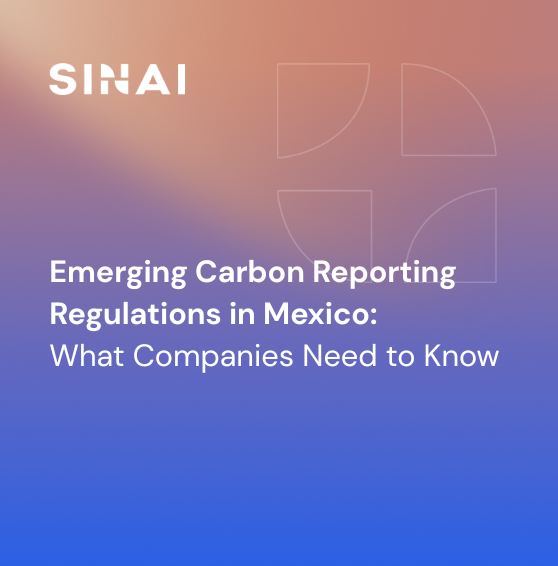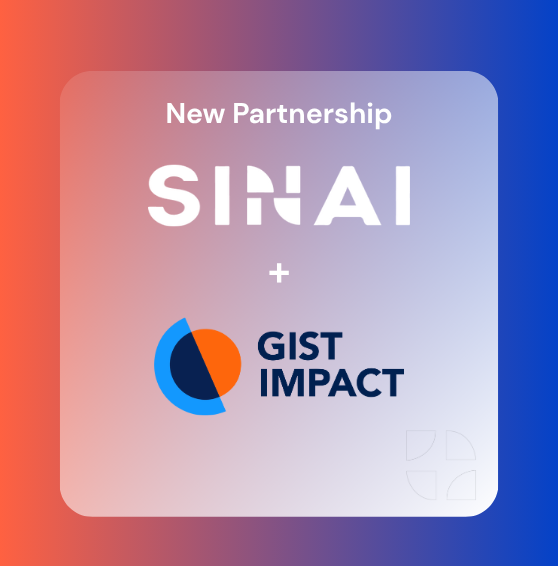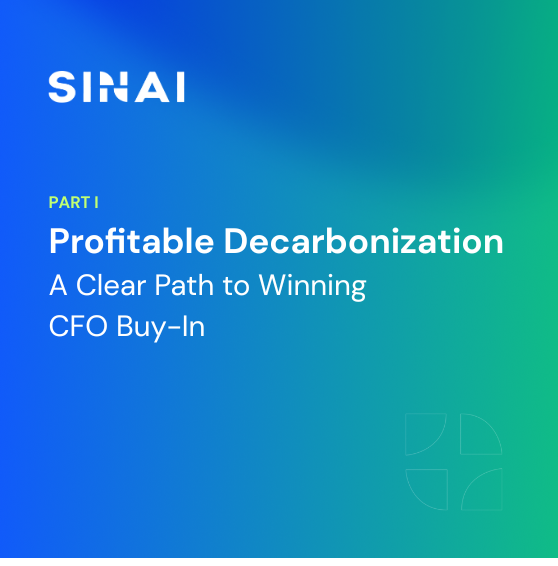Decarbonization Blog
New tips, trends, and insights from the planet's leading enterprise decarbonization platform
-2.png)
2025 at SINAI: A Year of Automation + Assurance for Audit-Ready Carbon Accounting
2025 was the year SINAI made carbon management operational at scale—automation that cuts the manual grind, assurance teams can stand behind, and AI that moves you from estimates to execution.
-2.png)
2025 at SINAI: A Year of Automation + Assurance for Audit-Ready Carbon Accounting
2025 was the year SINAI made carbon management operational at scale—automation that cuts the manual grind, assurance teams can stand behind, and AI that moves you from estimates to execution.
%20(7).png)
New York’s Mandatory GHG Reporting Program (6 NYCRR Part 253): What Companies Need to Know and How to Prepare
New York has finalized 6 NYCRR Part 253, a new mandatory GHG reporting regulation for carbon-intensive sectors. Understand who must disclose, key dates, methodologies, and how SINAI’s audit-readit reports help companies achieve compliance and decarbonization.
%20(7).png)
New York’s Mandatory GHG Reporting Program (6 NYCRR Part 253): What Companies Need to Know and How to Prepare
New York has finalized 6 NYCRR Part 253, a new mandatory GHG reporting regulation for carbon-intensive sectors. Understand who must disclose, key dates, methodologies, and how SINAI’s audit-readit reports help companies achieve compliance and decarbonization.

Emerging Carbon Reporting Regulations in Mexico: What Companies Need to Know
Mexico is tightening its climate and ESG disclosure rules. From carbon taxes to a national Emissions Trading System, learn what’s mandatory, what’s coming next, and how to prepare for compliance.

Emerging Carbon Reporting Regulations in Mexico: What Companies Need to Know
Mexico is tightening its climate and ESG disclosure rules. From carbon taxes to a national Emissions Trading System, learn what’s mandatory, what’s coming next, and how to prepare for compliance.

SINAI and GIST Impact Announce Partnership
SINAI Technologies and GIST Impact have announced a strategic partnership to unify carbon accounting, decarbonization modeling, and impact valuation. The collaboration delivers a unified solution for enterprises to meet global ESG regulations, manage climate risk, and execute data-driven reduction strategies with confidence.

SINAI and GIST Impact Announce Partnership
SINAI Technologies and GIST Impact have announced a strategic partnership to unify carbon accounting, decarbonization modeling, and impact valuation. The collaboration delivers a unified solution for enterprises to meet global ESG regulations, manage climate risk, and execute data-driven reduction strategies with confidence.

Part 4: Your California Climate Disclosure Journey – How to Report Emissions Under SB 253
ARB has released the draft SB 253 Scope 1–2 emissions reporting template. Here’s what covered companies need to know now, plus how SINAI can streamline your 2026 reporting.

Part 4: Your California Climate Disclosure Journey – How to Report Emissions Under SB 253
ARB has released the draft SB 253 Scope 1–2 emissions reporting template. Here’s what covered companies need to know now, plus how SINAI can streamline your 2026 reporting.
%20(1).png)
Why Engaging Your Top Suppliers Is the Fastest Route to Scope 3 Decarbonization
Top suppliers drive most of your Scope 3 footprint. Learn why focusing on them—and using AI to streamline data collection—turns compliance into competitive edge.
%20(1).png)
Why Engaging Your Top Suppliers Is the Fastest Route to Scope 3 Decarbonization
Top suppliers drive most of your Scope 3 footprint. Learn why focusing on them—and using AI to streamline data collection—turns compliance into competitive edge.
.png)
How AI Closes the Scope 3 Data Gap: Moving Beyond Guesswork
Scope 3 emissions are complex, but AI is turning guesswork into actionable insight. See how SINAI verifies data, engages suppliers, and accelerates decarbonization.
.png)
How AI Closes the Scope 3 Data Gap: Moving Beyond Guesswork
Scope 3 emissions are complex, but AI is turning guesswork into actionable insight. See how SINAI verifies data, engages suppliers, and accelerates decarbonization.

Profitable Decarbonization: A Clear Path to Winning CFO Buy-In (Part 1)
If decarbonization doesn’t improve margins, it won’t survive the budget review. Here’s how to make sustainability profitable—and win CFO and board support—with SINAI.

Profitable Decarbonization: A Clear Path to Winning CFO Buy-In (Part 1)
If decarbonization doesn’t improve margins, it won’t survive the budget review. Here’s how to make sustainability profitable—and win CFO and board support—with SINAI.
.png)
SINAI and Valor Carbon Partner to Accelerate Profitable Decarbonization in Central Asia
New partnership between SINAI & Valor Carbon brings together carbon accounting technology and climate finance to support companies in Kazakhstan and the broader region.
.png)
SINAI and Valor Carbon Partner to Accelerate Profitable Decarbonization in Central Asia
New partnership between SINAI & Valor Carbon brings together carbon accounting technology and climate finance to support companies in Kazakhstan and the broader region.
Take Decarbonization Beyond Carbon Accounting
Discover how Sinai’s powerful tools go beyond carbon accounting to drive actionable insights and enable seamless transition planning








